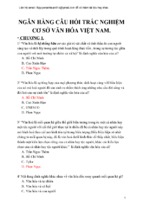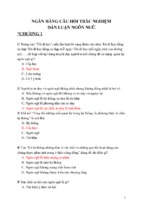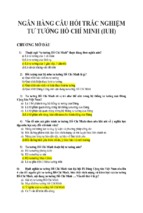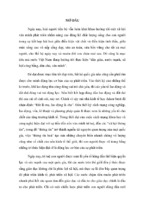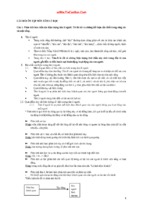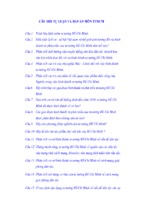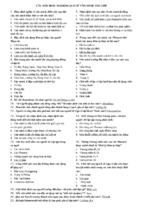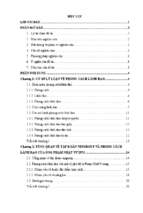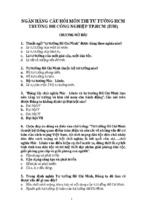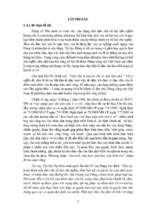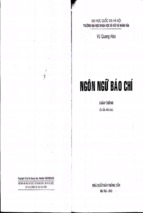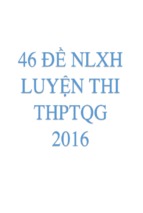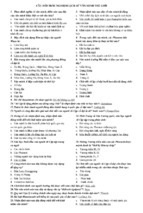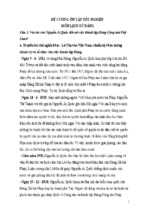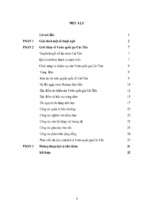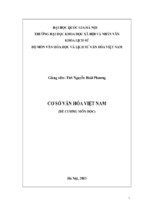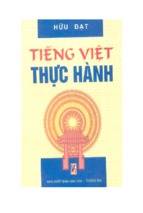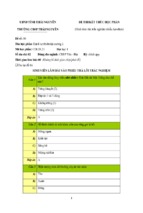THAI NGUYEN UNIVERSITY
UNIVERSITY OF EDUCATION
TRUONG MONG DIEN
THE APPLICATION OF INVENTED ALGORITHM
IN ORGANIZING GENETICS TEACHING
(GRADE 12 – BIOLOGY PROGRAM)
Specialty: Theory and Methodology of Biology Teaching
Code: 9140111
DISERTATION SUMMARY
THAI NGUYEN- 2020
The dissertation was completed at
THAI NGUYEN UNIVERSITY – UNIVERSITY OF EDUCATION
Supervisors: Assoc. Prof. PhD. Nguyen Phuc Chinh
Reviewer 1:...........................................................
Reviewer 2:...........................................................
Reviewer 3:...........................................................
The dissertation will be defended in the university committee:
THAI NGUYEN UNIVERSITY – UNIVERSITY OF EDUCATION
At ......h...... on ……………. 2020
The dissertation can be found at:
- National library of Vietnam’
- Thai Nguyen University - Learning Resource Center;
- Library ò University of Education.
Thư viện Trường Đại học Sư phạm Thái Nguyên
PUBLISHED WORKS RELATED TO THE DISSERTATION
1. Nguyen Phuc Chinh, Truong Mong Dien (2013), "Overview of
Invented Algorithm, Journal of Science and Technology, Thai
Nguyen University, No. 14, p. 211-215.
2. Truong Mong Dien, Nguyen Phuc Chinh (2015), "Scientific
basis of applying Invented Algorithm in teaching", Journal of
Education, No. 361, issue 1 in July 2015, p.16-18.
3. Truong Mong Dien (2016), "The use of Algorithm method in
teaching Biology", Journal of Education, No. 375, issue 1 on
February 2016, p.55-57.
1
INTRODUCTION
1. Rationate
It is derived from the need to innovate teaching methods, the
advantages of invented algorithm, the characteristics of genetic
knowledge (Biology 12), the dissertation title of “The application of
invented algorithm in organizing Genetics teaching (Grade 12
Biology Program)” has been chosen.
2. Objectives of the study
Application of invented algorithm to organize and use
algorithm in teaching genetics (Biology 12 - High School) to develop
cognitive capacity and creative thinking capacity for students.
3. Research subject and object
Research subject: Teaching Genetics (Biology 12 - High
School) according to the invented algorithm. Research object:
Teaching process of Biology 12 - High School.
4. Scientific hypothesis
If algorithm is built and used appropriately in the stages of
teaching Genetics (Biology 12 - High School), it will develop
cognitive and creative thinking capacity for students.
5. Limitations of the dissertation title
The dissertation researches and applies invented algorithm
theory in teaching Genetics (Biology 12 - High School).
6. Research mission
(1) Research of invented algorithmic theory and application of
algorithm in teaching.
(2) Investigation of the situation of algorithmic application in
teaching process in high schools.
(3) Proposing the process of developing some algorithms in
teaching Genetics (Biology 12 - High School).
(4) Developing a process of using algorithm which is built in
teaching Genetics (Biology 12 - High School)
(5) Pedagogical experiment to evaluate the effectiveness of the
proposed options.
7. Research Methods
Method of theoretical research, Method of pedagogical
investigation, Method of experts, Method of consultation with
experts, Method of pedagogical experiment
2
8. New contributions of the dissertation
(1) Proposing the process of developing some algorithms for
teaching Genetics (Biology 12 - High School).
(2) Proposing the process of using some algorithms in
teaching Genetics (Biology 12 - High School).
(3) Proposing a scale to evaluate the efficiency of applying
invented algorithm in teaching Genetics (Biology 12 - High school).
9. The structure of the dissertation
In addition to the introduction, conclusions, references and
appendices, the main content of the dissertation is presented in three
chapters: Chapter 1. Theoretical and practical basis. Chapter 2.
Application of invented algorithm in teaching Genetics (Biology 12 High School). Chapter 3. Pedagogical experiment.
Chapter 1: THEORETICAL AND PRACTICAL BASIS
1.1. Research history of algorithm
1.1.1. History of algorithmic research in the world
Science of Creativity in the world has been formed for a long
time. The Greek mathematician, Pappop, founded the “Science of
Creativity”, which he named Heuristics. Alfred Binet is a French
psychologist who invented the first practical IQ test. In 1939, A.
Osborn (American) proposed a method of brain stimulation or
brainstorming. In 1926, F. Kunze proposed the target audience
method. In 1942, the method of morphological analysis was proposed
by the Swiss. It was developed by Fritz Zwicky. The person who has
made a lot of contributions to developing innovative science is
Genric Sanlovic AltshulerAnthony. "Tony" Peter Buzan is the father
of the Mind map method. In 1983, a professor of psychology called
Howard Gardner of Harvard University published the theory of "
Multiple Intelligences". In 1992, Habits of Mind was introduced by
PhD. Arthur Costa, Honorary Professor at California State
University. Today, the research works of thought and creativity have
been given appropriate attention and have brought high efficiency in
many fields in many countries around the world.
1.1.2. History of algorithmic research in Vietnam
The person who has brought Science of Creativity into
Vietnam is Prof. Phan Dung with works such as: Scientific and
technical innovation methodology of problem solving and decision
making; Basic creative principles; The world inside creative human
3
beings… In 1991, Center for Scientific and Technical Creativity was
established at the University of Science - Viet Nam National
University, Ho Chi Minh City with the purpose of teaching ordinary
people to be creative. In 1998, Mr. Nguyen Van Le and his work
“The Scientific Basis of Creativity” presented a number of scientific
foundations of educating creativity for young people. Nguyen Minh
Triet with “Awakening of Creative Potential” in 2000 and Nguyen
Canh Toan with “Initiating of Creative Potential” in 2004 brought up
issues of creative learning.
1.2. Theoretical Basis
1.2.1. Some basic concepts
1.2.1.1. Algorithm:
1.2.1.2. Invented algorithm:
1.2.1.3. Theory for solving invented problems
1.2.2. Classification of Algorithm
1.2.2.1. Recognition algorithm
It is the Algorithm that results in the judgment of type x of A
x: perceived object. A: some kind.
1.2.2.2. Transform algorithm
All Algorithms that are not Recognition algorithm belong to
transform algorithm.
1.2.3. The role of algorithm in teaching in general and in teaching
Genetics in particular
1.2.3.1. The role of algorithm in teaching
For students
Firstly, the first benefit that algorithmic method brings is to
help students formulate 3 problem solving methods in an algorithmic
manner. Secondly, the algorithmic method helps to promote students'
positive and oriented thinking. Thirdly, it forms a common and
general method of scientific thinking and purposeful activities.
For teachers
Firstly, teaching by algorithmic methods helps teachers
formulate methods to solve problems for students in a focused, quick
and effective manner. Secondly, it helps teachers develop teaching
algorithms systematically and effectively. Thanks to the algorithms,
students will acquire knowledge better. Thirdly, it also helps teachers
design well the content of “customized teaching program” to help
students acquire the knowledge that teachers impart in a best way and
most systematically.
4
1.2.3.2. The role of algorithm in teaching Genetics
The role of algorithm in teaching Genetics is to provide the
right solution, avoid confused situation and having no advance
orientation. From an exercise or an example of a teacher, students
can apply to a variety of similar exercises. The second role is to help
students work systematically, know how to use visual images to
make the problem clear, easy to understand and avoid confusion
when solving them. The last one is to help students know how to
exploit and use problematic data in a rational way. For excellent
students: the algorithm helps students get fast, accurate results, which
takes less time, so that they can think of other solution methods. For
weak students: Following the steps correctly in the algorithm record
will help students find the correct solution, this helps them to have
confidence in learning, to be encouraged and encouraged, which will
form a better sense of learning.
1.2.4. Scientific basis of applying algorithm in teaching
1.2.4.1. Mathematical basis - algorithmic theory
The mathematical basis of the algorithm defines Finality; Determinability;
Universality; I/O Quantity; The effectiveness of the algorithm.
1.2.4.2. Basis of creative psychology
By analyzing the creative principles of G. Altshuller, we found
that there are 8 creative principles that can be applied in teaching,
namely: The principle of division; Principle of association; Principle
of local quality; Principle of changing physical and chemical
parameters; Principles of using intermediaries; Reversal principle;
Principle of flexibility and Principle of impact on "noise"
1.2.4.3. Basis of information theory
Algorithm has the effect of modeling research objects and
coding them with a kind of "language" that is both intuitive and
specific. Therefore, teaching by algorithm makes the process of
information transmission faster and more accurate.
1.2.4.4. Basis of control theory
Application of invented algorithm in the teaching process will
enhance the inverse relationship between teachers and students
because the invented algorithm promotes students' creative thinking,
independence and autonomy.
1.2.4.5. The basis of cognitive psychology and psychology
at different ages
1.3. Practical basis
1.3.1. Actual awareness of teachers' reasoning
Investigation of the theoretical cognitive status of teachers
includes perceptions of concepts, roles, algorithmic classification of
5
teachers in high schools today.
1.3.2. Practices of using algorithm of teachers in teaching Genetics
Practical investigations of algorithmic use include the extent,
benefits and difficulties of using algorithm of teacher.
The results show that teaching with the use of algorithm is
rarely applied by teachers, and if it is applied, it will only be used in a
very small amount of content in certain stages of teaching. Teachers
still have many confusion and difficulties when teaching algorithms,
so algorithm teaching has not been widely implemented and
conducted regularly. Teachers often use existing processes, the
design of algorithms appropriate to the teacher's targets and subjects
of teaching is still limited.
Chapter 2. APPLICATION OF INVENTED ALGORITHM IN
TEACHING GENETICS (BIOLOGY 12 - HIGH SCHOOL)
2.1. Analysis of structure and content of Genetics part (Biology
12 - High School)
In order to apply the algorithm in teaching genetics properly and
effectively, we have conducted the content analysis of each chapter
in genetics part to determine the content that can apply algorithms
and apply them in theoretical teaching or genetic exercises.
2.2. Developing algorithm for teaching Genetics
(Biology 12 - High School)
2.2.1. Principles of developing algorithm for teaching Genetics
(Biology 12 - High School)
2.2.1.1. Conformity with the program objectives and content
2.2.1.2. Guarantee of unity between science and education
2.2.1.3. User friendly
2.2.2. Process of developing algorithm for teaching Genetics part
(Biology 12)
2.2.2.1. Process of developing recognition algorithm
Step 1: Determination of knowledge target
Process of
developing
Step 2: Description algorithmic content
recognition
algorithm
Step 3: Preparation of algorithmic records
Step 4: Algorithm is active
6
Figure 2.2. Process of developing recognition algorithm
Example: Developing recognition algorithm for
Mendelian inheritance
Step 1: Determination of knowledge target
Students: Present the essential signs of Mendel's laws of inheritance;
Identify the Mendel's laws of inheritance in genetic exercises
Step 2: Description algorithmic content
Inherited by strict rules
The result of two factor cross is the same
Mendelian
inheritance
The characteristic is equally expressed in both sexes
Each pair of genes specifies a pair of characters
Each pair of genes lies on a different homologous
chromosome
Complete dominant - recessive
Step 3: Preparation of algorithmic records
W
The result of two factor
cross is the same
R
W
The characteristic is
equally expressed in
both sexes
R
W
Each pair of genes lies on a
different homologous
chromosome
R
W
Each pair of genes lies on a different
homologous chromosome
Đ
S
Complete dominant recessive
It is Mendel's laws of
inheritance
It is not Mendel's laws of
inheritance
7
Figure 2.3. Recognition algorithm for Mendelian inheritance
Step 4: Algorithm is active
Based on the specific problem requirements, students can
follow the steps of the algorithmic record to identify the Mendel's
laws of inheritance.
2.2.2.2. Process of developing transform algorithm
The author proposes the design process for the transform
algorithm of genetics part as follows:
Step 1: Analysis of problems
Step 2: Establishment of relationship between hypothesis
and conclusion
Step 3: Development of a problem solving program
Step 4: Solving problems according to the established
program
Wrong
Checking
Right
Conclusion
Illustrative example
Exercise: In cow, fur color characters is due to a gene
consisting of two genetic alleles that follow Mendel's Law of
Segregation of genes. A black-furred bull mated with the cows in the
following crosses:
Cross 1: ♂ black- furred (1) x ♀ brown- furred (2) → 1 blackfurredcalf (5), 1 brown-haired calf (6).
Cross 2: ♂ black- furred (1) x ♀ black- furred (3) → all of them are
black- furred calves (7).
Cross 3: ♂ black- furred (1) x ♀ black- furred (4) → 1 black- furred
calf (8), 1 brown- furred calf (9).
a. Determine the type of genes of cows and calves in the above
crosses?
8
b. If the cow and bull in the third cross continue mating, what is
the probability in the offspring that there are 3 calves including 2 brownfurred calves?
Step 1: Analysis of problems
In the exercise, there are 3 crosses of a bull with 3 different cows.
In order to identify the type of genes of cows and calves and solve other
requirements of the problem, students need to find a cross to help them
detect dominance, recessive and draw cross diagram.
Step 2: Establishment of relationship between hypothesis and
conclusion
Students can make a relationship between hypothesis and
conclusion as follows:
Hypothesis
Conclusion
Cross 3: Black x Black
=> Black + Brown
Identify dominance
character and recessive
character
Identify the type of
genes of individuals
Cross 1: Black x vàng =>
đen + Brown
Probability of
offspring of cross 2
Cross 2: Black x Black
=> 100% Black
Step 3: Development of a problem solving program
Hypothesis
Identify dominance character and recessive character
Convention of genes
Identify the type of genes
of individuals
Đ
Draw cross diagram of cross
2
Calculate the probability of
offspring
Conclusion
S
9
Step 4: Solving problems according to the established
program
Once a problem solving program has been developed, students
only need to follow the steps of the solving program to reach a
conclusion:
2.2.3 System of algorithms which have been built
2.2.3.1. Some recognition algorithms
• Recognition algorithms for gene concepts (Figure 2.5)
• Recognition algorithms for mutation concept (Figure 2.6)
• Recognition algorithms for types of chromosome mutations
(Figure 2.7)
• Recognition algorithms for of genetic linkage rule (Figure 2.8)
• Recognition algorithms for gene interaction rule (Figure 2.9)
• Recognition algorithms for sex linkage rule (Figure 2.10)
• Recognition algorithms for nuclear inheritance rule (Fig4ure 2.11)
2.2.3.2. Transform algorithm in Genetics part
• Problem solving program for Mendel's laws of inheritance
(Figure 2.12)
• Problem solving program for of genetic linkage rule (Figure 2.13)
• Problem solving program for gene interaction rule (Figure 2.14)
• Problem solving program for identifying the genetic structure
of self-pollination populations (Figure 2.15)
• Problem solving program for identifying the genetic structure
of panmixia populations (Figure 2.16)
• Problem solving program for pedigree genetics (Figure 2.17)
2.3. Using algorithms in teaching Genetics (Biology
12 - High School)
2.3.1 Principles of using algorithms in teaching Genetics (Biology
12 - High School)
2.3.1.1. Principle of unity between teaching and learning
2.3.1.3. Competence’s practice in applying knowledge to solve
problems
10
2.3.1.2. Promotion of students' activeness and creativity
2.3.2. Using algorithms in teaching Genetics (Biology 12
- High School)
2.3.2.1. Using algorithms in teaching Genetics theory
In order to apply the algorithm in teaching genetics theory
effectively, we have proposed a two-stage use process:
Step
Step 1:
1: State
State targets
targets of
of the
the lesson
lesson
Step
Step 2:
2: Analyze
Analyze the
the teaching
teaching content
content
Stage
Stage 11
Use
Use algorithmic
algorithmic
records
records built
built by
by
teachers
teachers to
to organize
organize
teaching
teaching activities
activities
Step
Step 3:
3: Teachers
Teachers provide
provide algorithmic
algorithmic
records
records and
and instructions
instructions how
how to
to use
use
Step
Step 4:
4: Practice
Practice and
and apply
apply them
them
Step
Step 1:
1: State
State targets
targets of
of the
the lesson
lesson
Stage
Stage 22
Instruct
Instruct students
students to
to
develop
develop their
their own
own
algorithmic
algorithmic records
records
Step
Step 2:
2: Organize
Organize students
students to
to analyze
analyze
logical
logical knowledge
knowledge
Step
Step 3:
3: Instruct
Instruct students
students to
to develop
develop
their
their own
own algorithmic
algorithmic records
records
Step
Step 4:
4: Comment
Comment and
and complete
complete
Figure 2.18. The process of using algorithms in teaching genetic
theory
Illustrative example of phase 1
Application of algorithm in teaching sex
linkage genetic
Step 1: State targets of the lesson:
After finishing the lesson, students must:
- Identify the mechanism for sex determination, genetic
characteristics of genes located on sex chromosomes.
- Present the genetic mechanism of genes located on sex
chromosomes.
11
- Identify the sex linkage genetic rule in problems and
situations.
Step 2: Analyze the teaching content
To learn about the sex linkage genetic rule, the knowledge map
students need to grasp is: what is a sex chromosome, how does the
sex chromosome affect the sex determination mechanism? What is
sex linkage genetic? Why does sex linkage genetic happen? How
does sex linkage genetic? What are the characteristics of sex linkage
genetic? What is the meaning of sex linkage genetic?
Step 3: Teachers provide algorithmic records and instruction
how to use
From the genetic characteristics of the sex linkage genetic rule,
the teacher will introduce students the algorithmic records identifying
the sex linkage genetic rule that have been designed by the teacher.
W
The expression characters
are irregular in both sexes
It is not sex linkage
rule
R
Same
Result of two-way cross
Genes are located in the
homologous regions of X and Y
Different
The character appears
only in heterogametic
sex
W
R
Genes on the X chromosome in the part
that do not have homologous regions on
the Y chromosome (direct inheritance)
Genes on the Y chromosome in the part that do not
have homologous regions on the X chromosome
(crossed inheritance)
Teacher: The instructions for using the algorithmic record to
identify the sex linkage genetic rule are as follows:
(1) The expression characters are irregular in both sexes. If the
result is wrong, it is concluded that it is not sex linkage genetic rule.
If it is right, go to step 2 or skip step 2 to go straight to step 3.
(2) Result of two-way cross: If result of two-way cross is the
same, it is concluded that the expression characters is by the gene
12
located on the homologous region of the X and Y chromosomes. If
result of two-way cross is different, go to step 3.
(3) The character appears only in heterogametic sex (having
XY chromosomes). If the result is right, it is concluded that it is due
to genes on the Y chromosome in the part that do not have
homologous regions on the X chromosome (direct inheritance). If it
is wrong, the conclusion is it is due to genes on the X chromosome in
the part that do not have homologous regions on the Y chromosome
(crossed inheritance).
Step 4: Practice and apply them
The teacher asks students to come back to Morgan’s
experiment to practice using algorithmic records
Students perform the request of the teacher individually.
- Expression characters are irregular in both sexes: Right → It
is sex linkage genetic character.
- Result of two-way cross is different: Right
- The character appears in both sexes → The character is due
to X chromosome gene in the part that do not have homologous allele
on the Y chromosome.
Teacher assigns other exercise:
Exercise: Suppose a striped rooster breeds with a black-furred
hen and all of their offspring (F1) is striped chickens. Next, F1
continue to breed with F1, F2 includes 50 striped chickens and 16
black-furred chickens and all black-furred chickens are hens. Which
rule is fur color characters inherited?
Teachers ask students to discuss in groups to do the exercise or
also assign home tasks for students.
Illustrative example
Developing recognition algorithms for nuclear
inheritance rule
Step 1: Determine the target
Students need to identify targets: distinguish the nuclear
inheritance rule
Step 2: Organize students to analyze logical knowledge
To organize students to analyze knowledge logic about nuclear
inheritance rule, teachers can navigate by a system of questions such as:
- What factors govern nuclear inheritance rule?
- Which nuclear inheritance rule have you learned?
13
- What is the relationship between these genetic laws?
Students mobilize the learned knowledge to answer the
suggested questions of teachers and find out the knowledge logic:
Step 3: Students develop their own algorithmic records
To organize students to design their own algorithmic records to
recognize the nuclear inheritance rule, teachers can guide students:
(1) List the identifying signs of each genetic rule.
(2) Arrange individual signs to identify each rule.
Teachers can suggest students complete the following table :
Rule
Two-way cross
Identifying signs
Character
The number of
expression in
gene pairs per
both sexes
chromosome
The number of
genes pairs of a
pair of characters
Menden
Gene interaction
Genetic linkage
Sex linkage
(3) Algorithmic preliminary design algorithm
Students can use pencil to sketch out the algorithm on paper. Put
1:
selects
and
assigns
Step
1: Teacher
Teacher
selects exercises
exercisesto
anddraw.
assigns tasks
tasks
the nature signs in order, draw arrowsStep
and
find instructions
(4) Inspection
and
completion
Step
2:
Organize
students
establish
the
relationship
between
Step
2:
Organize
students
establish
the
relationship
between
Use
Use algorithm
algorithm to
to
hypothesis
and
hypothesis
and conclusion
conclusion
2.3.2.2. Usingguide
algorithms
in teaching Genetics
exercises
guide students
students to
to
Stage
Stage 11
solve
solve genetic
genetic
exercises
exercises
Step
Step 3:
3: Teacher
Teacher provides
provides problem
problem solving
solving program
program
Step
Step 4:
4: Students
Students solve
solve problems
problems according
according to
to the
the program
program
Step
Step 5:
5: Practice
Practice
Step
Step 1:
1: Teacher
Teacher selects
selects exercises
exercises and
and assigns
assigns tasks
tasks
Stage
Stage 22
Instruct
Instruct students
students to
to
develop
develop their
their own
own
algorithm
algorithm for
for solving
solving
genetic
genetic exercises
exercises
Step
Step 2:
2: Organize
Organize students
students establish
establish the
the relationship
relationship between
between
hypothesis
hypothesis and
and conclusion
conclusion
Step
Step 3:
3: Organize
Organize students
students to
to develop
develop their
their own
own problem
problem solving
solving
program
program
Step
Step 4:
4: Comment
Comment and
and complete
complete the
the problem
problem solving
solving program
program
Step
Step 1:
1: Select
Select problem
problem
Stage
Stage 33
Apply
Apply creative
creative
principles
principles to
to
develop
develop and
and
solve
solve creative
creative
exercises
exercises
Level
Level 1:
1: Teacher
Teacher
ss develop
develop
creative
creative
exercises
exercises for
for
students
students to
to
practice
practice
Step
Step 2:
2: Identify
Identify and
and solve
solve problems
problems
Step
Step 3:
3: Teachers
Teachers introduce
introduce creative
creative exercises
exercises based
based
on
on creative
creative principles
principles
Step
Step 4:
4: Develop
Develop solving
solving programs
programs and
and solve
solve
creative
creative exercises
exercises
Step
Step 5:
5: Practice
Practice
Level
Level 2:
2:
Teachers
Teachers guide
guide
students
students to
to
develop
develop
creative
creative
exercises
exercises
Step
Step 1:
1: Select
Select problem
problem
Step
Step 2:
2: Solve
Solve problems
problems
Step
Step 3:
3: Organize
Organize students
students to
to develop
develop their
their own
own
creative
creative exercises
exercises based
based on
on creative
creative principles
principles
Step
Step 4:
4: Students
Students develop
develop aa program
program to
to solve
solve the
the
problem
problem exercises
exercises
Step
Step 5:
5: Comment
Comment and
and conclude
conclude
14
Stage 1: Use algorithm to guide students to solve genetic
exercises
Step 1: Teacher selects exercises and assigns tasks
Based on the targets of knowledge, skills, competencies to be
achieved and based on the cognitive capacity of each student class,
teachers choose appropriate exercises.
Step 2: Organize students establish the relationship
between hypothesis and conclusion
The establishment of the relationship between the hypothesis
and the conclusions is that the students analyze the problem to
mobilize known knowledge, identify the requirements and think
about how to solve the problem.
Step 3: Teacher provides problem solving program
In stage 1, teachers need to develop sample programs for
students to familiarize themselves with the learning method and to
learn how to build the next learning program.
Step 4: Students solve problems according to the program
For students with average and weak study ability, they will be
more confident and more interested in learning than when they solve
problems after being provided with solving programs, from which
they will love the subject more. With good students, this can be
considered as a stepping stone for them to accumulate more
knowledge and experience to prepare for designing their own
learning programs according to algorithm.
Stage 2: Instruct students to develop their own algorithm for
solving genetic exercises
Step 1, step 2 of this stage is basically the same as stage 1.
15
Step 3: Organize students to develop their own problem
solving program
In this step, when students design the algorithm themselves,
the algorithms are the product of students' thinking process. Students
think, write and draw by their own language, thus maximizing the
potential of the brain. On the other hand, due to being self-created, it
creates interest in learning for students. This method first helps
students understand the lesson and memorize the lesson better, and
then train them to think logically and coherently so that they know
how to solve problems scientifically in other situations. This is the
target of using algorithm in teaching to be achieved.
Step 4: Comment and complete the problem solving program
Teachers organize for students to report their results and
lessons learned. Teachers synthesize ideas, then standardize to help
students perfect the problem solving program. In this step, teachers
can also motivate students to think by asking them to generalize the
exercises into a general form.
Stage 3: Apply creative principles to develop and
solve creative exercises
Level 1: Teachers develop creative exercises for students to
practice
Step 1: Select problem
The selection of problems in this period is similar to the above
two stages. Teachers also need to pay attention to the lesson
objectives, student level to choose the problem accordingly.
Step 2: Identify and solve problems
The problem selected in step 1 is the starting problem.
Teachers organize students to identify genetics part that problem
belongs to.
Step 3: Teachers introduce creative exercises based on
creative principles
When giving creative exercises, teachers should clearly state
how the exercises are created and the creative principles on which the
exercises are based so that students can easily visualize and think.
Step 4: Develop solving programs and solve creative exercises
16
Level 2: Teachers guide students to develop creative
exercises
Basically, step 1 and step 2 in level 2 are the same as step 1
and step 2 in stage 1.
Step 3: Organize students to develop their own creative
exercises
Based on the creative cycle of Razumovsky [35], based on the
system of creative principles, the development of creative exercises
in the dissertation is conducted as follows:
Starting problem
Concepts and rules
Develop methods to solve problems and
find results
Make questions and answers
Creative
principles
Creative problem
2.3.2.3. Using algorithms to enhance creative thinking and problem
solving competence for students in teaching Genetics (Biology 12 High School)
In teaching Genetics, the use of algorithms to enhance creative
thinking and problem solving skills is most clearly revealed in
teaching genetic exercises, especially
when they develop and solve
Creative exercise
creative assignments.
Analyze
The process of applying
creative principles to guide students in
Identification
solving creative exercises takes place
according to the following process:
Analyze
Establish a relationship between hypothesis and conclusion
Creative principles
Propose the options
Evaluate
Choose the optimal plan
Perform
Result
Comment
Lesson
17
Figure 2.20. The process of solving creative exercises
The level to which the creative thinking capacity and problem
solving capacity in teaching is formed and developed depending on the
user and the use of teaching process.
Using algorithm in forming new knowledge
Algorithm used in teaching helps students orientate textbook
research to find new knowledge, and also works to create a shortened
knowledge product from textbooks. The method of using algorithms to
teach new knowledge is inductive measure.
Using algorithm in consolidating and perfecting knowledge
This is an important stage in the learner's awareness path to
practice the use of the acquired knowledge in specific situations. This
is to strengthen the process of acquiring knowledge, bringing
knowledge to serve practical requirements, creating products similar
to existing or higher, newer products. This is also a period of
consolidating skills to turn them into professional ones for the
ultimate learning target of "Practice make perfect".
Using algorithm in testing and assessing
Testing and essessing is the period in which students self-assess or
evaluate learning process of each other. This is also the stage for teachers
to assess the level and capacity of each student, receive feedback from
students to adjust the deveopment of teaching algorithms and their
teaching process to suit the targets and subjects. To implement this task,
teachers need to build a tool to assess the level of knowledge acquisition
and level of capacity development in each student.
Chapter 3. PEDAGOGICAL EXPERIMENT
- Xem thêm -

